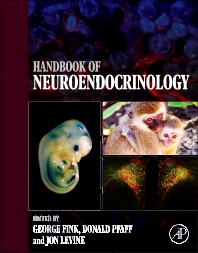Books in Life sciences
Books in Life sciences
Elsevier's Life Sciences collection helps researchers get comprehensive coverage and up-to-date information on the study of living organisms, their processes, and interrelationships, spanning disciplines like biology, genetics, and biochemistry, and addressing emerging trends such as genomics, biotechnology, and sustainability, essential for advancing knowledge and driving innovation in the field.
- 1st Edition
- Volume 74
- September 16, 2011
- English
- Hardback9 7 8 0 1 2 3 8 7 6 9 0 4
- eBook9 7 8 0 1 2 3 8 7 6 9 8 0

The Genetics of Circadian Rhythms
- 1st Edition
- Volume 85
- September 13, 2011
- English
- Hardback9 7 8 0 1 2 3 8 6 4 8 5 7
- eBook9 7 8 0 1 2 3 8 6 4 8 6 4

Computational Chemistry Methods in Structural Biology
- 1st Edition
- September 12, 2011
- Mark R. Kelley
- English
- eBook9 7 8 0 1 2 3 8 5 0 0 0 3

DNA Repair in Cancer Therapy
- 1st Edition
- Volume 55
- September 8, 2011
- English
- Hardback9 7 8 0 1 2 3 8 7 0 4 2 1
- eBook9 7 8 0 1 2 3 8 7 0 4 3 8

Advances in Clinical Chemistry
- 3rd Edition
- Volume 135
- September 7, 2011
- English
- Hardback9 7 8 0 1 2 3 7 4 8 1 4 0
- eBook9 7 8 0 0 8 0 8 8 8 5 7 6

The Zebrafish: Genetics, Genomics and Informatics
- 1st Edition
- August 31, 2011
- George Fink + 2 more
- English
- Hardback9 7 8 0 1 2 3 7 5 0 9 7 6
- eBook9 7 8 0 1 2 3 7 8 5 5 4 1

Handbook of Neuroendocrinology
- 1st Edition
- August 31, 2011
- Stephen Neidle
- English
- Hardback9 7 8 0 1 2 3 7 5 1 3 8 6
- Paperback9 7 8 0 1 2 8 1 0 3 7 2 2
- eBook9 7 8 0 1 2 3 7 5 1 3 9 3

Therapeutic Applications of Quadruplex Nucleic Acids
- 1st Edition
- Volume 1
- August 30, 2011
- A.J. Boucot
- English
- Hardback9 7 8 0 4 4 4 4 1 1 8 2 2
- eBook9 7 8 0 0 8 0 8 6 8 4 2 4

Evolution and Extinction Rate Controls
- 2nd Edition
- August 29, 2011
- John Semmlow
- English
- Hardback9 7 8 0 1 2 3 8 4 9 8 2 3
- eBook9 7 8 0 1 2 3 8 4 9 8 3 0

Signals and Systems for Bioengineers
- 1st Edition
- Volume 1
- August 23, 2011
- English
- eBook9 7 8 0 0 8 0 5 7 8 9 7 2

Advances in Insect Physiology